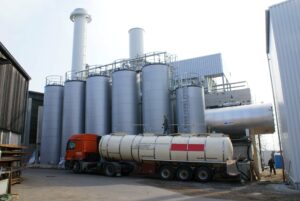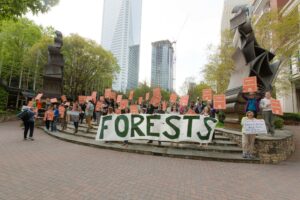Biomass and the EU’s Circular Economy equation
By Sini Eräjää, Policy Officer EU Bioenergy, Birdlife Europe and the European Environmental Bureau
Last December the European Commission published their long awaited Action Plan for the Circular Economy. The intention is to show how the EU will move from a wasteful linear to a circular economy where resources and materials are continuously re-used and recycled in a way that reduces waste and relieves the tremendous pressure we have been putting on the earth’s natural resources. How does biomass fit into this equation?
The Circular Economy Package, which includes both an action plan and revised legislative proposal on waste, has been surrounded by political drama. Soon after taking office, the Juncker Commission withdrew the previous Commission’s draft proposal. In the face of strong criticism, including by member states, they promised to bring it back and deliver even more ambition. But we’ve just discovered that this is not the case. Instead, most of the previous legally binding targets having been watered down in the revised proposal.
That said, the action plan does provide some interesting views on biomass use, including for bioenergy and bio-based products. Firstly, biomass and bio-based products have been identified as a priority sector, which means they “face specific challenges in the context of the circular economy because of the specificities of their products or value-chains, their environmental footprint or dependency on materials from outside Europe”. According to the Commission, these sectors “need to be addressed in a targeted way”.
This is an important admission because considering the debates going around about a bioeconomy, one gets the impression that resource supply and efficiency is no longer an issue since we’re talking about renewable resources like biomass from plants and trees. But one must keep in mind that even if such resources are renewable, there’s still a very real risk of overexploitation and degradation of the many benefits we depend on from nature. NGOs have long been highlighting the impacts of the EU’s increasing demand on biomass for energy, which has been placing greater and greater pressure on land and forests worldwide.
Simply put, once burned, biomass no longer fits inside the circular economy equation. So without corrective action, the EU’s current energy policies on bioenergy are already on a crash collision course with its policies for a circular economy. The action plan is the European Commission’s first formal recognition of this challenge. It calls for a cascading use of renewable resources and even more importantly aims to “ensure coherence and synergies with the circular economy when examining the sustainability of bioenergy” in its renewable energy policies.
Other concrete measures the Commission has promised to take forward on biomass are “guidance and dissemination of best practices on the cascading use of biomass and support to innovation in this domain through Horizon 2020” and an “assessment of the contribution of the 2012 Bioeconomy Strategy to the circular economy and a possible review”.
While guidance on cascading use of biomass will be very welcome, existing policies will also need to be aligned with the principle. Meaning for example that the use of biomass for energy must be limited to what can be supplied sustainably following very strict standards and conditions.
Other policy proposals already included in the Circular Economy Package can be seen as advancements which support the cascading use of biomass, and ways to promote this through EU legislation. Revision of the waste legislation includes a mandatory EU level target on recycling of wood packaging waste (which unfortunately went down from 80% to 75% in the new proposal). It also pushes for separate collection of biowaste (albeit without clear targets) and limits landfilling of waste, all of which should provide opportunities to make more use out of the wood, food and other biomass sources we use.
But the true test of the promises made in the Circular Economy Action Plan will nevertheless be what we see in the proposal for a new bioenergy sustainability policy, expected in late 2016. To stay in line with resource efficiency, the policy will need to strike a better balance between material and energy uses of biomass, and limit direct burning of it, this way the policy will hold true to the EU’s circular economy equation.
Photo: Trees (c) Ryan Alexander, Flickr Creative Commons




